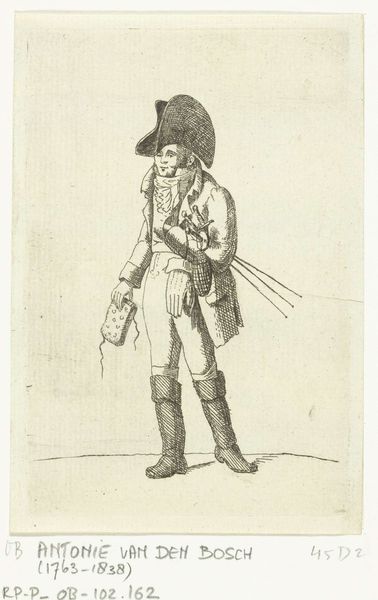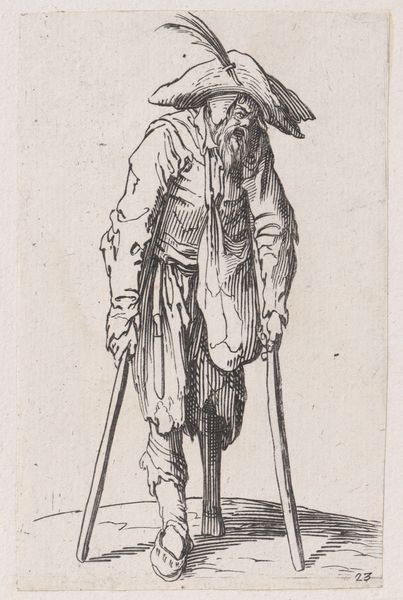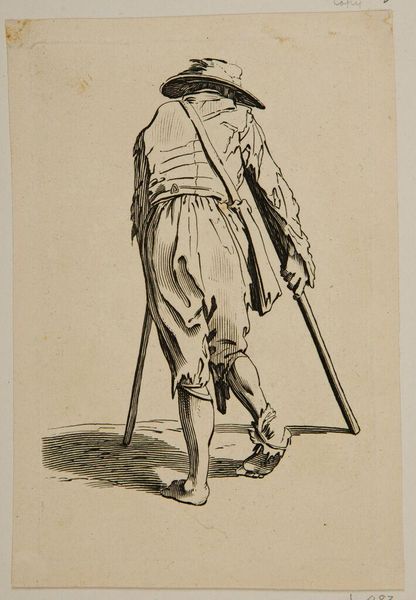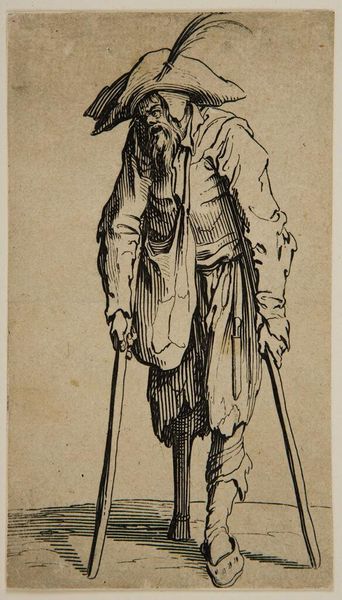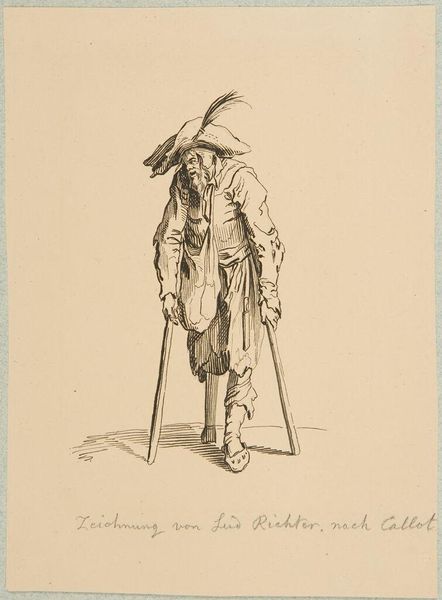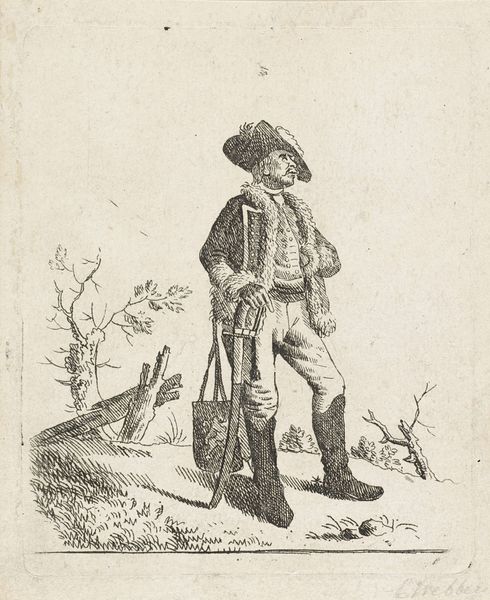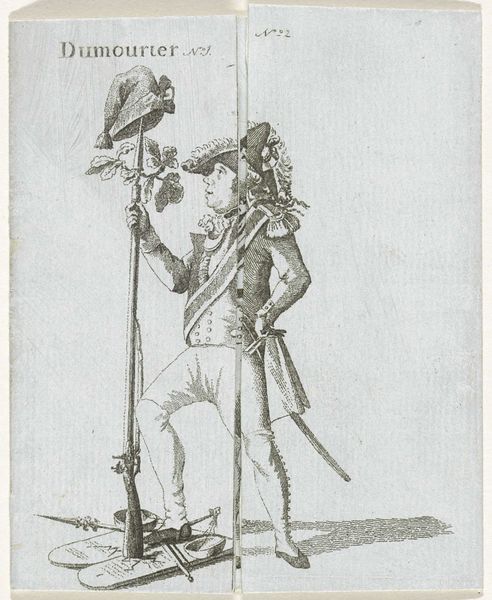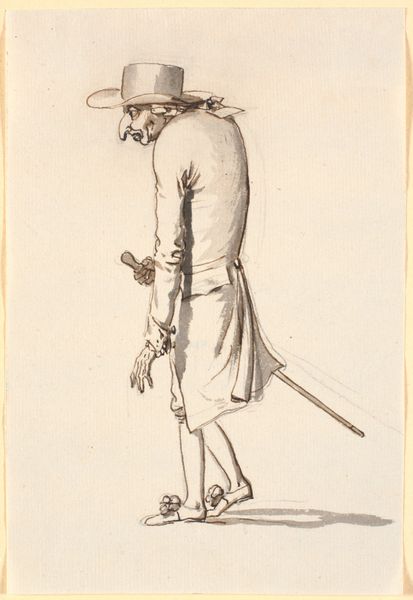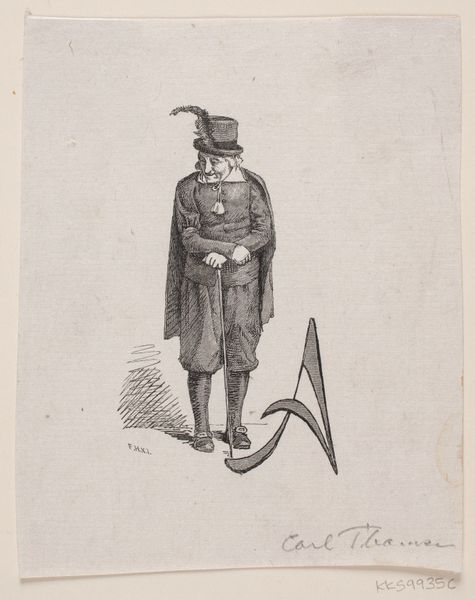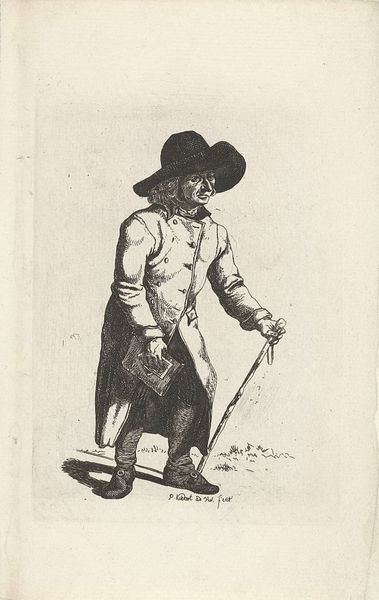
Dimensions: Plate: 14 Ã 9 cm (5 1/2 Ã 3 9/16 in.) Sheet: 15.3 Ã 10.5 cm (6 Ã 4 1/8 in.)
Copyright: CC0 1.0
Curator: This is Jacques Callot's "Beggar with Wooden Leg," a small etching residing here at the Harvard Art Museums. The date of creation is unknown. What's your first take? Editor: Stark and unsettling. The figure's crude wooden leg, emphasized by the artist’s line work, speaks to a world of hardship and inequity. Curator: Callot's expertise in etching allowed for incredibly detailed depictions of clothing and texture, even on such a small scale. We can almost feel the coarseness of the fabric. It begs the question: What were the social structures and conditions that led to such widespread poverty? Editor: Absolutely. And consider how the print medium itself democratized access to such images. Callot’s beggars were consumed in a society wrestling with issues of poverty, class, and the very public display of suffering. Curator: Yes, the materials and methods of production here connect directly to the circulation and consumption of these images, influencing how people viewed and interacted with the realities of poverty in their own communities. Editor: Reflecting on this piece, I'm struck by how it challenges our modern notions of acceptable imagery, reminding us of art's power to confront social realities. Curator: Indeed. Callot's focus on materials and techniques enriches our understanding of the social and cultural context of his time.
Comments
No comments
Be the first to comment and join the conversation on the ultimate creative platform.
